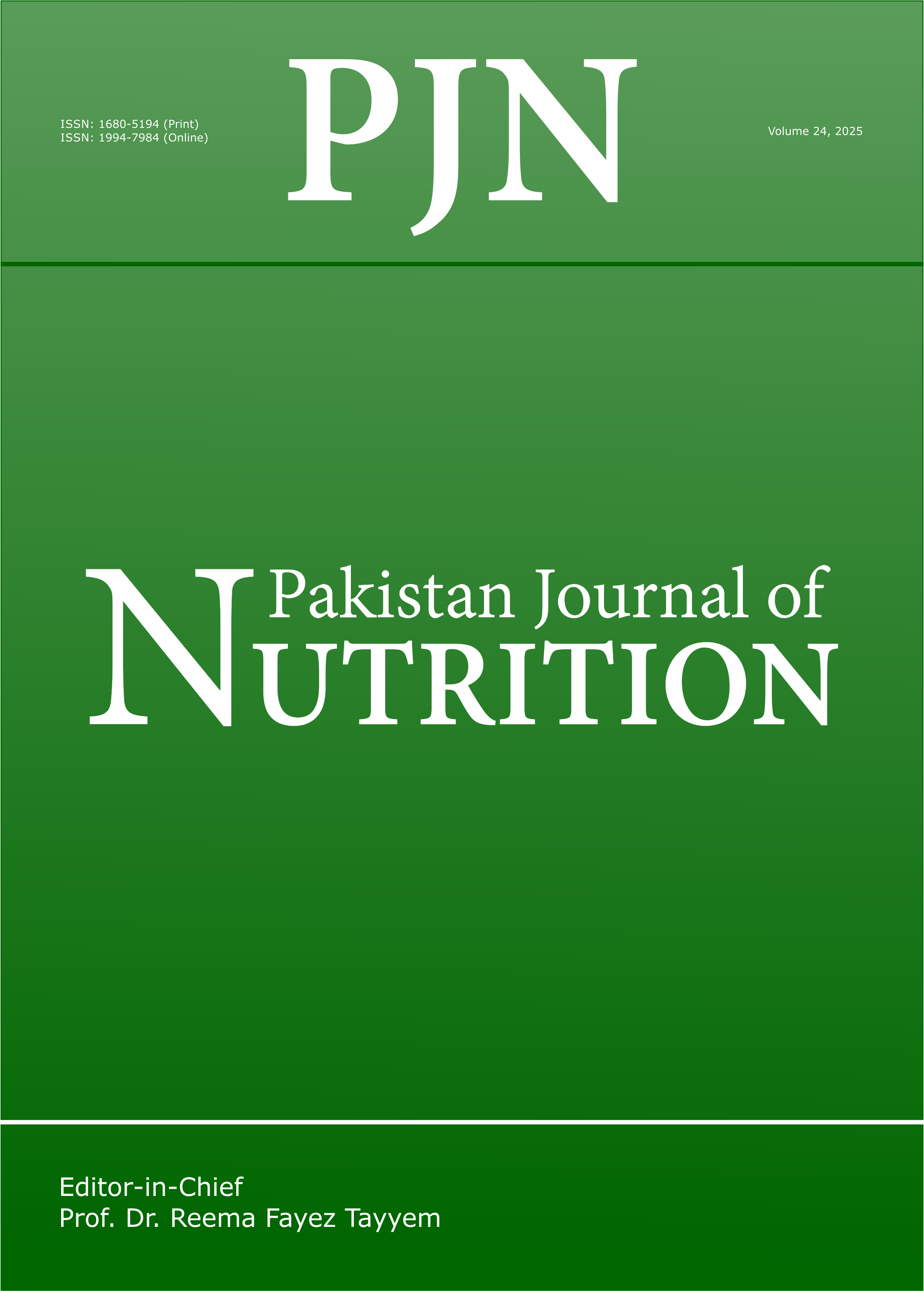Lipodystrophic and Lipo-Peroxidative Effects of Hydrogenated Coconut Oil Diet in Rats
DOI:
https://doi.org/10.3923/pjn.2007.593.596Keywords:
Essential fatty acids, lipid peroxidation, Lipoprotein, saturated fatsAbstract
The effects of dietary saturated fat on blood lipid and lipoprotein composition and lipid peroxidation were studied in rats. Male albino rats (Rattus norvegicus) were maintained either on diets with 5% fat supplements made of 5% soyabean oil or 5% coconut oil. Similarly, two other groups were fed diets that were isocaloric with the former but contained 25% fat supplements made of 25% soyabean oil or 25% coconut oil. The concentration of triacylglycerols in the plasma of the high coconut oil fed rats was three to six-times those of the others. The concentration of free cholesterol was much higher in the plasma of the coconut oil-fed rats. There were significant decreases in the plasma level of chylomirons, VLDL and HDL, but a significant increase in the LDL level of the coconut oil-fed rats. In all the tissues studied, the malondialdehyde level increased significantly in the coconut oil fed rats and most prominently in the liver and the kidney, while the reduced glutathione levels decreased significantly in the coconut oil-fed rats. It is considered that ingestion of coconut oil for a considerably long time may affect lipid metabolism and alter the structure and function of the enzymes responsible for converting the essential fatty acids to prostaglandins or their endoperoxide precursors. The increase in the malondialdehyde level and the decrease in the reduced glutathione level are indications of the lipid peroxidative effect of saturated fat diet, while the reduced HDL and high level of LDL can be major contributory factors to atherogenesis.
Downloads
Published
Issue
Section
License
Copyright (c) 2007 Asian Network for Scientific Information

This work is licensed under a Creative Commons Attribution 4.0 International License.
This is an open access article distributed under the terms of the Creative Commons Attribution License, which permits unrestricted use, distribution and reproduction in any medium, provided the original author and source are credited.

